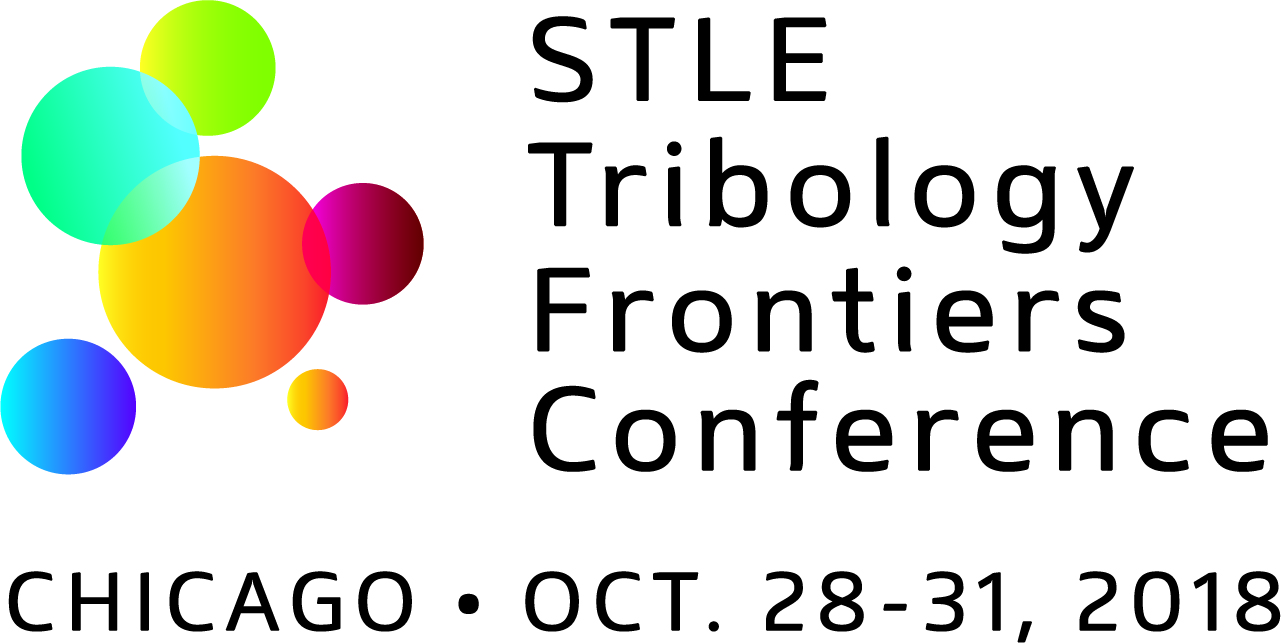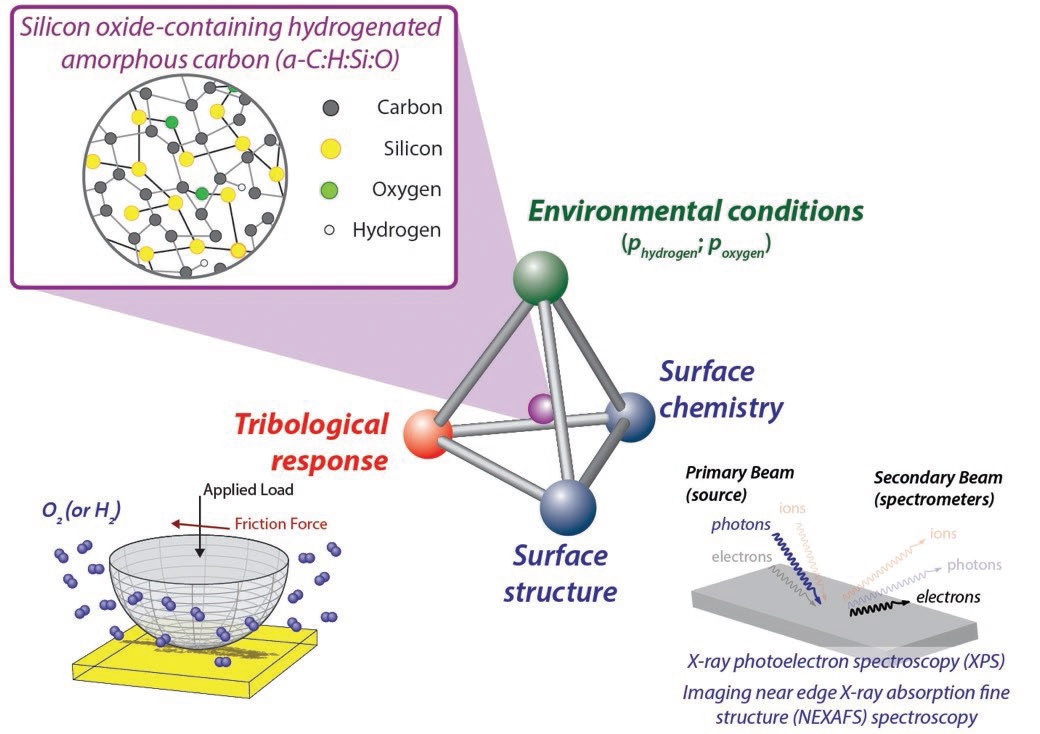Effect of Hydrogen and Oxygen Partial Pressure on the Tribochemistry of Silicon Oxide-Containing Hydrogenated Amorphous Carbon
F. Mangolini (1), K.D. Koshigan (2),*, M.H. Van Benthem (3), J.A. Ohlhausen (3), J.B. McClimon (4), J. Hilbert (5), J. Fontaine (2), R.W. Carpick (5) | TLT 2016 TFC Abstract Highlights April 2018
1. Institute of Functional Surfaces, School of Mechanical Engineering, University of Leeds, Leeds, LS2 9JT, UK
2. Laboratoire de Tribologie et Dynamique des Systèmes, Ecole Centrale de Lyon, 69134, Ecully cedex, France
3. Sandia National Laboratories, Albuquerque, New Mexico 87185, USA
4. Department of Materials Science and Engineering, University of Pennsylvania, Philadelphia, PA 19104, USA
5. Department of Mechanical Engineering and Applied Mechanics, University of Pennsylvania, Philadelphia, PA 19104, USA
*Present address: Functional Coatings and Surface Engineering Laboratory, Ecole Polytechnique Montréal, QC, Canada
For the benefit of our readers involved in tribology research, TLT is publishing abstracts of the best papers presented at the 2016 Tribology Frontiers Conference. Registration for the 2018 TFC opens in May. Until then, you can find 2018 updates and program information at www.stle.org.

Co-sponsored by ASME Tribology Division.
Silicon oxide-containing hydrogenated amorphous carbon (a-C:H:Si:O) is of interest for advanced tribo-mechanical applications as it exhibits good tribological performance across a broader range of environments compared to hydrogenated amorphous carbon and higher thermo-oxidative stability. However, the scientific basis for this improved behavior is not fully established. In this work, we performed
in situ X-ray photoelectron spectroscopic measurements and
ex situ imaging near edge X-ray absorption fine structure (NEXAFS) spectroscopic analyses to develop a fundamental understanding of the chemical changes and structural transformations occurring in the near-surface region of a-C:H:Si:O when sliding against steel in different environments (from high vacuum to controlled hydrogen and oxygen pressures). The outcomes of this research provide new insights into the interrelationship between tribological response, structural and chemical surface modifications and environmental conditions for a-C:H:Si:O.
